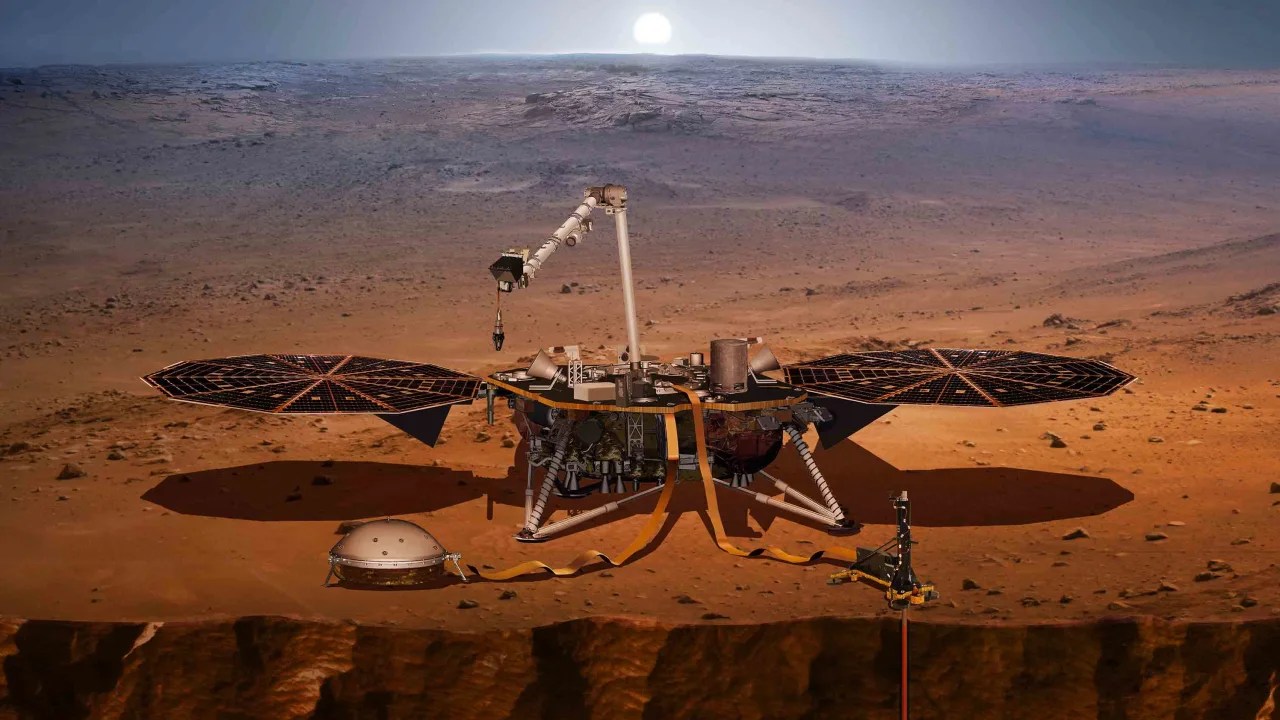(CNN) – Mars is spinning faster than before, according to data collected on the red planet by NASA’s InSight lander.
The now-retired InSight is equipped with a suite of instruments, including antennas and a radio transceiver called RISE (Internal Structure and Gyro Experiment). The instruments were used to track the rotation of Mars during the mission’s first 900 days on the planet.
Astronomers have determined that the rotation of Mars is increasing by about 4 milliseconds per year², that is, the length of the Martian day is shrinking by a fraction of a millisecond per year. A Martian day lasts about 40 minutes longer than a day on Earth.
The increase in acceleration appears to be impossibly small, and researchers aren’t entirely sure why that is. However, they suggest that it may be due to the accumulation of ice at the poles of Mars or the rise of landmasses after being covered with ice. When a planet’s mass changes in this way, it can cause the planet’s rotation to speed up.
On April 24, 2022, InSight acquired one last one Personal Photos where he displayed his dusty solar panels. Credit: NASA/JPL-Caltech
The findings, which are based on an analysis of InSight data shared before the expedition lost power and retired, are reported in a study published in June in the academic journal Nature.
InSight, the first mission to study the interior of Mars, was initially supposed to continue about two years after landing in November 2018. But NASA has extended the mission for another two years.
The InSight mission continued collecting data on Mars to the end, and it went quiet in December 2022, after its solar panels were blocked by dust and they stopped receiving sunlight.
InSight benefited from advances in radio technology, which was a huge improvement over what the Viking landers of the 1970s and Pathfinder carried in the 1990s. deep space network, Or the huge antennas located at three strategic points on Earth that transmit information from space missions, and have also improved the accuracy of data captured by InSight and sent back to Earth.
Scientists used the Deep Space Network to send signals to RISE on InSight, which in turn reflected the signal back to Earth. These transmitted signals helped the researchers track subtle changes in frequency caused by the Doppler shift, which is what causes sirens to change tone based on their distance. The frequency changes due to the rotation of the planet.
“What we’re looking for are differences of a few tens of centimeters over the course of a Martian year,” explains lead author of the study, Sebastien Le Maistre, RISE Principal Investigator at the Royal Belgian Observatory, in a statement. “It takes a long time and a lot of data to accumulate before we can see these differences.”
Mars vibration measurement
Previous research, made possible by the mission’s unique discoveries of the planet’s interior, confirmed that Mars has a molten metal core. The researchers then used RISE to measure Mars’ wobble as its core churned.
Tracking Mars’ wobble, or shift, allowed the team to measure the core’s size.
RISE data indicates that the nucleus has a radius of about 1,835 kilometers.
This new number has been compared to previous estimates of the core radius obtained by tracking seismic waves as they travel through the interior of Mars. Incorporating these measurements, the researchers estimate that the radius of the Martian core is between 1,790 and 1,850 kilometers.
Although InSight is no longer operational, the collection of data collected over four years on Mars has changed the way scientists understand the Red Planet. The mission was the first to reveal some of the secrets of Mars’ interior, and scientists will be analyzing their data for decades.
“It’s really cool to be able to get this last measurement, and with such precision,” Bruce Banerdt, who served as principal investigator for InSight before retiring on Aug. 1, said in a statement. He worked at NASA’s Jet Propulsion Laboratory in Pasadena, California, for 46 years.
“I’ve been involved in efforts to get a geophysical station like InSight on Mars for a long time, and results like this make all those decades of work worthwhile.”

“Proud web fanatic. Subtly charming twitter geek. Reader. Internet trailblazer. Music buff.”

:quality(85)/cloudfront-us-east-1.images.arcpublishing.com/infobae/TEQF6EONZRFGLLLDIDD4L2O4EE.jpg)

:quality(75)/cloudfront-us-east-1.images.arcpublishing.com/elcomercio/XU32LRAEZFDDPNVHLFU3CKVBYY.jpg)



More Stories
How to create 3D videos with my iPhone, it will be very useful even for your business
NASA discovers an anomaly in the Earth’s magnetic field that could have serious consequences for humans
Can the Earth be divided into two parts?